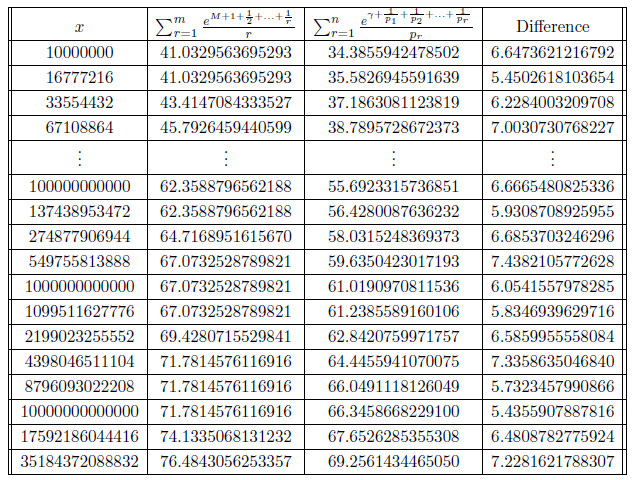Let $p_k$ be the $k$-th prime number, $\gamma$ be the Euler-Mascheroni constant and $M$ be the Meissel–Mertens and let $m$ be the integer part of $\log p_n$. We can show that
$$ \sum_{r=1}^{m} \frac{e^{M + 1 + \frac{1}{2} + \ldots{} +\frac{1}{r}}}{r} = \sum_{r=1}^{n} \frac{e^{\gamma + \frac{1}{p_1} + \frac{1}{p_2} +\ldots{}+ \frac{1}{p_r}}}{p_r} + H + O\Big(\frac{1}{\ln p_n}\Big) $$
We were expecting that as $n$ increased, $H$ would approach a constant value with a small positive or negative error after each iteration. However while actually computing the constant $H$, we observed that it values fluctuates a lot between 5 and 8 as shown in the table below. We did not observe any sign of convergence.
Question:
- Why is the constant $H$ fluctuating or rather what is its true nature?
- Why must it fluctuate between 5 and 8?
It is possible that I must have done an error somewhere and in fact the difference of the two series must actually be alternating.

